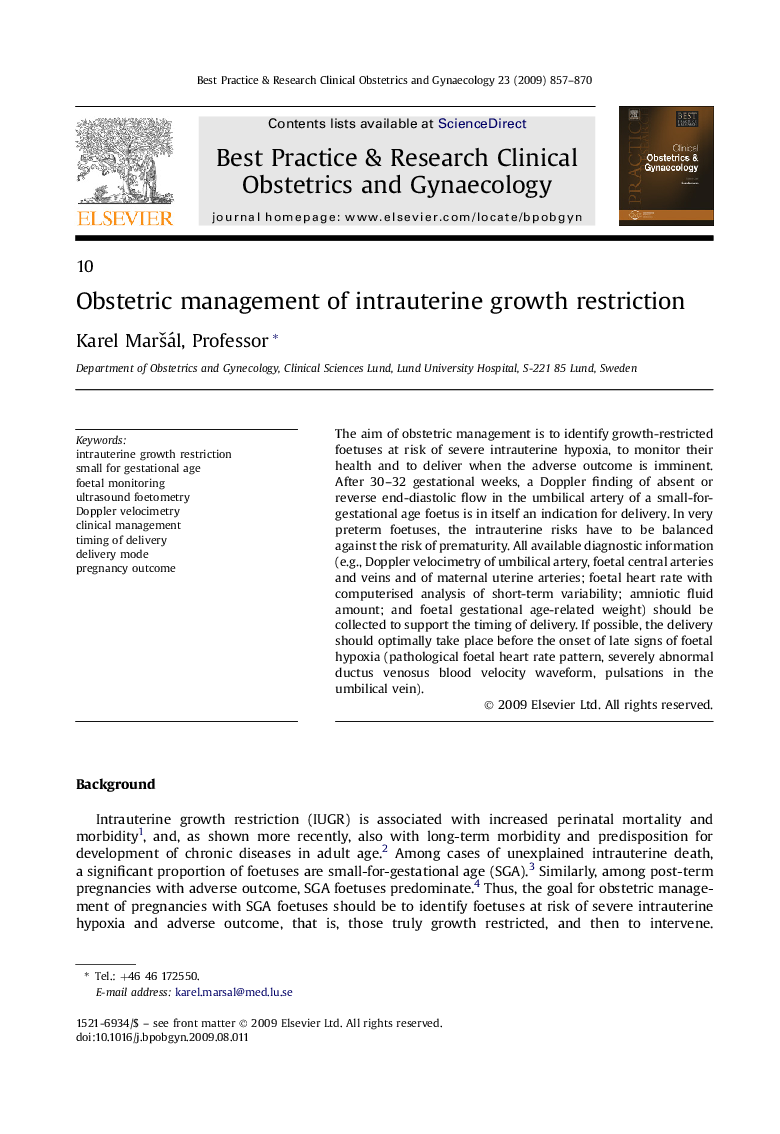| کد مقاله | کد نشریه | سال انتشار | مقاله انگلیسی | نسخه تمام متن |
|---|---|---|---|---|
| 3907395 | 1251045 | 2009 | 14 صفحه PDF | دانلود رایگان |

The aim of obstetric management is to identify growth-restricted foetuses at risk of severe intrauterine hypoxia, to monitor their health and to deliver when the adverse outcome is imminent. After 30–32 gestational weeks, a Doppler finding of absent or reverse end-diastolic flow in the umbilical artery of a small-for-gestational age foetus is in itself an indication for delivery. In very preterm foetuses, the intrauterine risks have to be balanced against the risk of prematurity. All available diagnostic information (e.g., Doppler velocimetry of umbilical artery, foetal central arteries and veins and of maternal uterine arteries; foetal heart rate with computerised analysis of short-term variability; amniotic fluid amount; and foetal gestational age-related weight) should be collected to support the timing of delivery. If possible, the delivery should optimally take place before the onset of late signs of foetal hypoxia (pathological foetal heart rate pattern, severely abnormal ductus venosus blood velocity waveform, pulsations in the umbilical vein).
Journal: Best Practice & Research Clinical Obstetrics & Gynaecology - Volume 23, Issue 6, December 2009, Pages 857–870